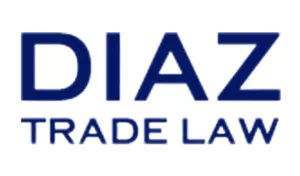Background
The Uyghur Forced Labor Prevention Act ("UFLPA") went into effect on June 21, 2022. The law creates a rebuttable presumption that imports of all goods mined, produced, or manufactured wholly or in part in the Xinjiang Uyghur Autonomous Region of China ("Xinjiang"), or by entities identified on the UFLPA Entity List, were made using forced labor and are prohibited from entry into the U.S. under 19 U.S.C. § 1307. For more information about the UFLPA, please see our previous blog articles here and here. U.S. Customs and Border Protection ("CBP") has been vigorously enforcing this law, detaining hundreds of attempted import shipments every month under both the UFLPA and Withhold Release Orders for suspected forced labor violations.
Importers that have a shipment detained under the UFLPA can seek to have the shipment released under one of two paths. They can either:
- show that in spite of the fact that the goods were produced wholly or partially in Xinjiang or by an entity on the UFLPA Entity List, they were not in fact made using forced labor; or
- show that neither the goods nor the inputs used to make the goods were produced wholly or partially in Xinjiang and have no connection to entities on the UFLPA Entity List (i.e., that the goods fall outside the scope of the UFLPA).
Taking the second path means requesting an "admissibility review."
Last year, pursuant to the UFLPA, the Department of Homeland Security published a Strategy to Prevent the Importation of Goods Mined, Produced, or Manufactured with Forced Labor in the People's Republic of China and CBP published its UFLPA Operational Guidance for Importers ("Operational Guidance"). The Operational Guidance includes information about the type of supply chain tracing information it expects to see in an admissibility review package. Until recently, this was the only guidance available.
New Guidance
On February 23, 2023, CBP published two additional guidance documents for importers attempting to show that their goods fall outside the scope of the UFLPA. The first document, entitled "Best Practices for Applicability Reviews: Importer Responsibilities," clarifies and expands the Operational Guidance by stating that importers generally need to show documents, produced in the ordinary course of business, that describe the order, purchase, manufacture, and transportation of the inputs that are used to make the imported goods. The document re-emphasizes that CBP's admissibility reviews are made on a case-by-case basis; because supply chains vary between countries, industries, and companies, there is no checklist or "one-size-fits-all" approach to the type of documents CBP expects importers to produce. However, CBP emphasizes that it is looking for three primary types of documents:
- Documents about the Parties Involved: CBP expects to see information about all parties involved in the sourcing, manufacture, manipulation, transportation, and export of imported goods.
- Documents Related to the Payment and Transportation of Inputs: CBP expects to see documents related to the purchase of the inputs (invoices, contracts, purchase orders, etc.), proof of payment or other financial documents, and documents showing the physical movement of the inputs from one place to another.
- Documents related to the Transaction and Supply Chain: CBP expects to see records that show the country of origin of the imported goods and all of the inputs used to make them, which may include bills of lading, manifests, and packing lists.
Of course, imported goods that have complex supply chains involving many different inputs, suppliers, and stages of production require lengthy admissibility packages that may involve hundreds of documents. The second document CBP published on February 23 provides guidance on how to organize this information. In this document, entitled "Guidance on Executive Summaries and Sample Tables of Contents: Preparing a UFLPA Applicability Review Submission," CBP explains that admissibility review submissions should include an Executive Summary consisting of:
- An annotated document list;
- A summary of the supply chain; and
- Any additional summary information.
The document also includes two sample tables of contents. The first shows a table of contents organized by the parties involved in the transaction, the documents related to the payment and transportation of the inputs, and the transaction and supply chain. The second is organized by the steps involved in the supply chain.
In addition to the two guidance documents, CBP also expanded its list of Frequently Asked Questions and responses thereto.
Other Important Considerations
- All importers have a responsibility to use reasonable care to ensure the products they import were not made using forced labor and should therefore do due diligence on all of their supply chains.
- Once a detention notice is issued for a suspected UFLPA violation, the importer generally has only thirty days to respond. Thus, importers should ensure that their suppliers, and their suppliers' suppliers, are maintaining the necessary documents for immediate submission to CBP.
- If an importer is successful in securing the release of goods detained under the UFLPA, it should alert CBP if another shipment with an identical supply chain is detained, for faster review.
- Customs Trade Partnership Against Terrorism (CTPAT) members are given priority review of admissibility packages; importers may want to consider becoming a CTPAT member for this reason.
- While the UFLPA identifies certain high-priority products for enforcement (cotton, tomatoes, and polysilicon), CBP has detained goods in a variety of industries under the UFLPA, including metals, chemicals, foodstuffs, and other products. Any goods suspected of being made in whole or in part in Xinjiang or by an entity on the UFLPA Entity List may be subject to detention.
- CBP plans to add UFLPA enforcement statistics to its website around March 31, 2023. Currently, the only publicly available statistics combine both UFLPA and Withhold Release Order enforcement actions.
The content of this article is intended to provide a general guide to the subject matter. Specialist advice should be sought about your specific circumstances.


